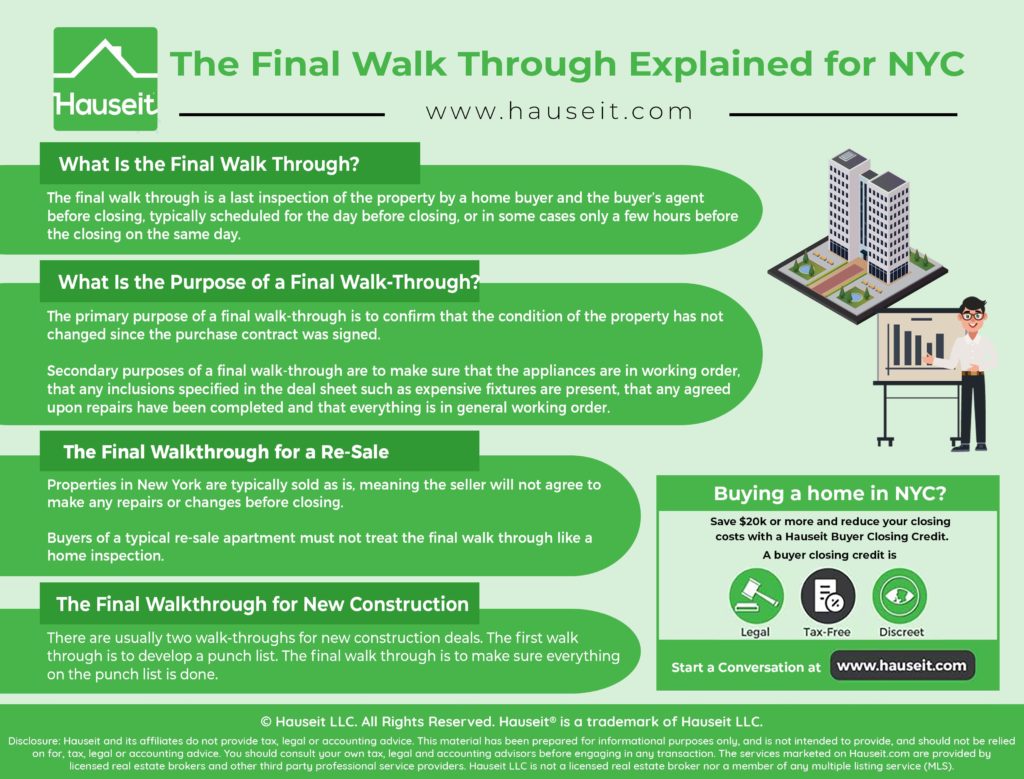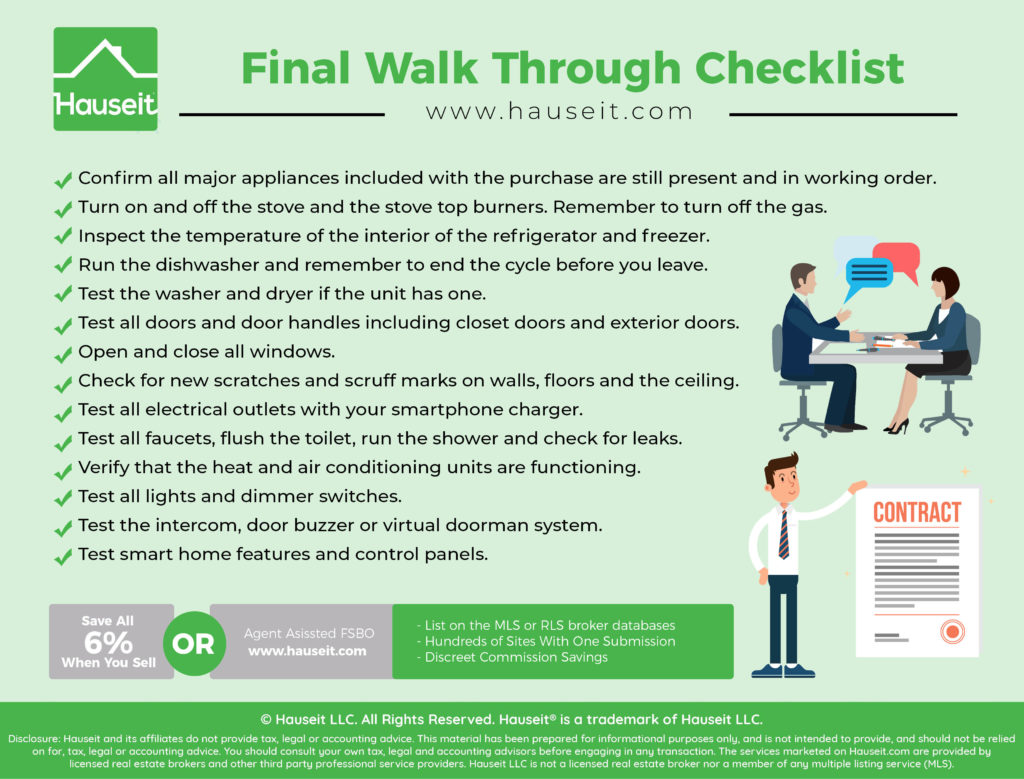The final walk through is a critical last step before closing. We’ll explain what the real purpose of a final walkthrough is and provide you with a handy final walk through checklist you can use.
We’ll also explain the differences between a final walkthrough for a re-sale vs new construction in this article.
Table of Contents:

What Is the Final Walk Through?
The final walk through is a last inspection of the property by a home buyer and the buyer’s agent before closing. The final walk through is typically scheduled for the day before closing, or in some cases only a few hours before the closing on the same day.
The final walk through is scheduled by the real estate agents, and both the buyer’s agent and the seller’s agent will be present along with the home buyer.
A Full Service Listing for 1%
Sell your home with a traditional full service listing for just one percent commission.
What Is the Purpose of a Final Walk-Through?
The primary purpose of a final walk-through is to confirm that the condition of the property has not changed since the purchase contract was signed.
In practice, this means verifying that the property’s condition has not changed since the last time the buyer visited the property, which could have been a week or more before the purchase contract was fully executed.
Getting What You Agreed Upon
Secondary purposes of a final walk-through are to make sure that:
The appliances are in working order, that any inclusions specified in the deal sheet such as expensive fixtures are present, that any agreed upon repairs have been completed and that everything is in general working order.
Final Walk Through Checklist
-
Confirm all major appliances included with the purchase are still present and in working order.
-
Turn on and off the stove and the stove top burners. Remember to turn off the gas.
-
Inspect the temperature of the interior of the refrigerator and freezer.
-
Run the dishwasher and remember to end the cycle before you leave.
-
Test the washer and dryer if the unit has one.
-
Test all doors and door handles including closet doors and exterior doors.
-
Open and close all windows.
-
Check for new scratches and scruff marks on walls, floors and the ceiling.
-
Test all electrical outlets with your smartphone charger.
-
Test all faucets, flush the toilet, run the shower and check for leaks.
-
Verify that the heat and air conditioning units are functioning.
-
Test all lights and dimmer switches.
-
Test the intercom, door buzzer or virtual doorman system.
-
Test smart home features and control panels.
Get a 2% Rebate When You Buy
Save thousands on your home purchase with a buyer agent commission rebate from Hauseit
The Final Walkthrough for a Re-Sale
Properties in New York are typically sold as is, meaning the seller will not agree to make any repairs or changes before closing.
The only time a seller might agree to make repairs before closing is if the buyer is the only interested party and the seller is desperate because his or her property has been on the market for over a hundred days.
Even then, buyers and sellers in New York will typically agree on a closing credit, in other words a seller concession in closing costs or price, rather than require the seller to make changes to the apartment.
It Is Not a Home Inspection
As a result, it’s important to understand that the final walk through is very different from the home inspection which is typically done before a purchase contract is signed.
It’s actually a common buyer tactic to ask for a home inspection after an offer has been accepted but before a purchase contract is signed.
Buyers typically use this opportunity to find issues with the apartment and ask the seller to fix them. When sellers inevitably refuse and tell buyers that the property is being sold as is, the two sides sometimes agree to a reduction in price instead.
Therefore, buyers of a typical re-sale apartment must not treat the final walk through like a home inspection. You are not there to nit-pick and find things for the seller to fix. That should have been done already before you signed the purchase contract. You are simply there to confirm that the condition of the property has not changed since the signing of the contract.
The contract will usually confirm that the property is being sold as is in the condition that it was found on the date of execution, that the appliances will be delivered in working order and specify any inclusions and exclusions that were negotiated.
Simply put, you are there to make sure that you are getting what was agreed upon in the fully executed purchase and sale contract. Nothing more, nothing less.
Save 2% On Your Home Purchase
Save thousands on your home purchase with a buyer agent commission rebate from Hauseit







